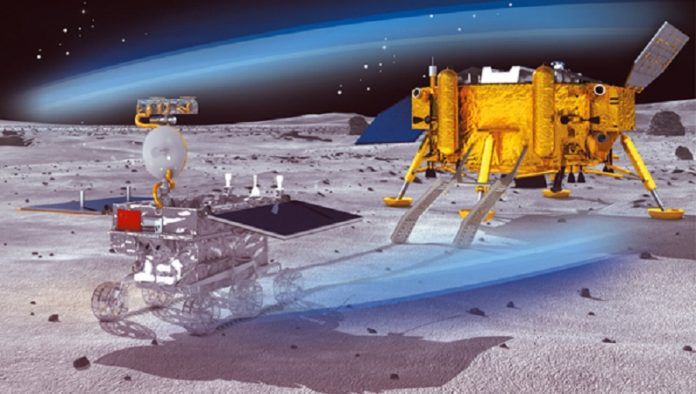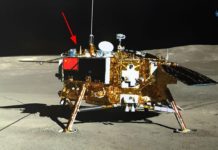Based on the operational success of its relay satellite launched on May 21 this year, China has confirmed that the Chang’e-4 lunar rover will be launch in December as scheduled.
The announcement was made yesterday, in a press conference that marked the unveiling of the lunar rover. During the event, the Chinese government also kicked off a contest to name the lunar rover, which will allow members of the public to suggest a name for the spacecraft. The contest is similar to the one held for China’s previous lunar mission, Chang’e-3, during which the name Yutu (Jade Rabbit) was chosen for the mission’s rover.
During the event, engineers from China’s Lunar Exploration Programme also revealed more details about the craft. The Chang’e-4 rover, it was confirmed, will land on the Aitken Basin at the South Pole on the far side of the lunar surface, and will has a design life of 3 months. The craft will be launched together with a lunar lander aboard the Long March 3B rocket, from Xichang Satellite Launch Centre.
Said Wu Weiren, Chief Designer of Chang’e-4, “Chang’e-4 was originally supposed to be a backup for Chang’e-3, but we realized afterwards that it could do more. Because the mission is to the far side of the Moon, which is inaccessible from Earth, we launched the relay satellite earlier to form a communication bridge between the Earth and the Moon.”
He continued, “It takes about 2 months to launch the relay satellite into orbit. It has been 1.5 months now, and the satellite is performing well, which is why we have decided to launch the rover by the end of this year. We’ve also gotten some knowledge about the landing position of the rover, which is on a basin on the far end of the Moon. The terrain around it is quite flat, which can ensure safe landing.”
So far, upgrades to the rover have been made in order to better accommodate the environment, including a device to determine a safe landing point. The rover has also been equipped to deal with drastic changes in temperature, and has been modified from the Chang’e-3 design so it will not experience power outages like Yutu did.
At 140kg, the rover will be the smallest to ever land on the moon; the weight limitation, according to the designers, was necessary in order for both the lander and rover to be launched simultaneously. Also, because of the difficulties of landing on the far side of the Moon, the rover presented numerous challenges to the design team, making the process far more technically-challenging compared to Chang’e-3. As such, the mission will represent one of the biggest achievements in the history of Chinese aerospace engineering.







